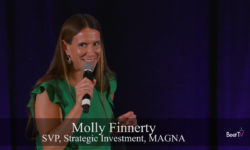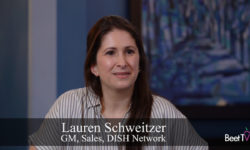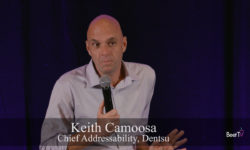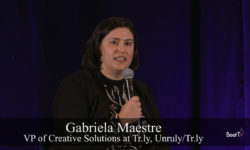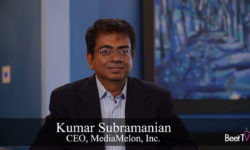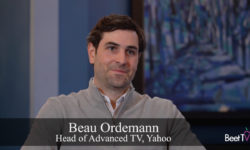SAN JUAN, Puerto Rico – If connected TV is going to make good on its promise to bring super-targetability and automation to TV advertising, it had better eliminate faux pas in ad placements.
In this video interview with Beet.TV at Beet Retreat San Juan, Tom St. John, Head of Partnerships, Beachfront Media, says, too often, TV ad loads are too high.
And, St. John says, ad systems don’t include rich-enough data to ensure TV ads don’t clash with each other.
A glimpse into last week’s @Beet_TV Beet Retreat! Our Head of Partnerships, Tom St. John, joined leaders from @Amobee, @DishMedia, @1plusX, and @MediaMelon to discuss the key role partnerships play in the #advancedTV ecosystem. Thanks for a great event, @Beet_TV! pic.twitter.com/jMkNSeJjNW
— Beachfront (@beachfrontmedia) March 21, 2022
Quality counts
Avoiding ads that clash, competitive ads or ads that are inappropriate for the audience are key imperatives for an industry that is considering automated TV ad trading.
Buyers now know the potential of the medium, but some remain spooked by the risks.
“When you’re sitting at home on the couch looking at that device, the big screen on your wall, no one cares if it’s a streaming experience or a traditional linear experience, they just know it should be clean and pristine,” says St. John.
His Beachfront offers software for increasing ad revenue and delivery, splitting inventory, controlling creative across inventory and more.
Tag Team: LiveRamp Combines Contextual, Audience Data for Upfront Pitch
Lighten the load
St. John says “beating people over head with more heavier ad load or more ads” is a “shame”.
He advocates two alternative ways to drive CTV ad revenue:
- Adopting header bidding-style technology that optimizes for revenue-per-second, rather than sticking to a “waterfall” auction model.
- Constructing TV ad pods to flag which slot someone is buying.
With such solutions, there are “juices to be squeezed” from CTV technology, he adds.
Beachfront Media – based in New York – offers technology to help publishers and programmers drive revenue and yield, simplify ad operations, and deliver pristine viewer ad experiences.
Time for tags
But St. John is also the latest to call for better industry-standard metadata, tags that can describe ad pods and surrounding shows to buying platforms.
“Things like ‘genre’ (tags) don’t get used,” he complains. “It’s probably less than half the time that genre gets passed through on the CTV request, which is kind of crazy.”
It is problematic that industry-standard content definitions tend to be based on web content forebears.
“There’s a standard for it in the IAB spec,” St. John acknowledges. “However, the taxonomy is not really tight.
“You can have a genre of ‘sports’, someone can pass it through that way or they can pass it through as ‘football’ or ‘sports ball’ or whatever they want, it’s kind of a Wild West.
Be like linear
So St. John is calling for a more concerted industry-wide standardization effort – and a widespread learning from traditional linear TV.
“It’s a clear case for protocols,” he says.
“If you look over to the traditional TV side, they’ve got their own standard.
“Let’s try to push those standards forward. Let’s see if we can get the existing industry consortiums, IAB and whomever, to kind of push the envelope a little bit more.”
You are watching coverage from Beet Retreat San Juan 2022, presented by AppScience, Infillion, MadHive, SpringServe, Univision & VideoAmp. For more videos, please visit this page.







